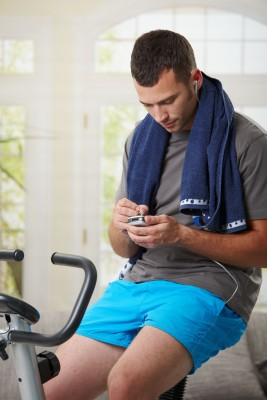 If you exercise regularly, it is a good idea to monitor your progress by tracking the resistance, sets, and repetitions of every exercise performed.
If you exercise regularly, it is a good idea to monitor your progress by tracking the resistance, sets, and repetitions of every exercise performed.
Once you are comfortable keeping these simple notes, begin recording as much relevant information as possible. Consider including notes about warm-ups and pre-routine stretches performed, your heart rate following certain sets, the length of breaks between sets, and muscle soreness or minor injuries experienced following each workout.
This may seem like a lot to write down, but all of it is helpful in adjusting your routines.
Recording your heart rate and the length of breaks taken between sets will help you find the optimal intensity-level for your workouts.
Tracking physical responses can also reveal a lot.
For example, if, after performing a previously difficult routine, you find you are no longer as sore as you had documented initially, the time has likely come to increase the difficulty level or try some new exercises. Recording warm-ups and stretches can also help by visibly linking limbering up with shorter recovery times and decreased soreness.
Finally, documentation encourages both variation and consistency, if only so you’ll always have something new to write about and also avoid lengthy gaps in your records. That’s great news because keeping things fresh can prevent psychological burnout and muscular adaptation, while dedication is the key to steady progress.
Keeping detailed records is also great for out-of-gym routines like running, hiking, and swimming, or even competitive activities like tennis or hockey because it allows you to closely monitor your physical responses and fitness level.
Another great option is to go high tech!
A paper workout journal can be difficult to maintain and frustrating to read, but an electronic database is always easily located and even easier to read at a glance. With just a little know-how, this can be done on any home computer. If you happen to own a smartphone, there are numerous dedicated applications, many of them completely free, to help make the entire process even more interactive and enjoyable!
If you feel you need assistance to design and implement record keeping techniques to suit your fitness needs, consider hiring a personal trainer today.
Shaun Karp is a certified personal trainer. He owns Karp Personal Training and Rehabilitation, located in Burnaby, B.C. For further information call his office at 420-7800 or visit their web site www.karpfitness.com.
